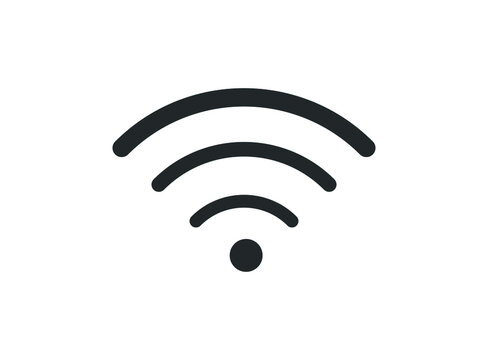 Usually access points are connected to the Ethernet network via a cable and given a static IP address, then attached to the ceiling where their health is indicated by LED lights. Inside each access point, there is an antenna that transmits and receives radio waves. To connect to the wireless signal, a computer or mobile device must have a wireless adapter installed and configured; this provides an antenna similar to that installed in the access point.
Usually access points are connected to the Ethernet network via a cable and given a static IP address, then attached to the ceiling where their health is indicated by LED lights. Inside each access point, there is an antenna that transmits and receives radio waves. To connect to the wireless signal, a computer or mobile device must have a wireless adapter installed and configured; this provides an antenna similar to that installed in the access point.
Access points are configured to broadcast a service set identifier (SSID). Typically, these are given names that are descriptive and a security code is assigned to the SSID. Modern operating systems will notify users that SSID’s (or “wireless networks”) are available, and the user can select the SSID to which she or he wants to connect. If necessary, the user will be prompted to provide the security code, and those settings can be saved so the device connects automatically when the SSID is available. System administrators can set SSID’s so they do not broadcast to users. If a system administrator wants to create an SSID that only technicians use, then it can be hidden and only technicians know the name of the SSID and the security code used to connect it.
An access point can be configured to offer SSID’s to devices within its range (typically a few tens of meters depending on building materials and power rating), and the SSID’s can provide different capacity. A common configuration is to make three SSID’s available on a school network. An “administration” SSID is hidden from users, and is used to connect the devices of system administrators, school administrators, and others who need the most secure connections. A second “teaching and learning” network is used to connect mobile devices owned by the school most of the bandwidth is dedicated to this SSID, and it allows users to authenticate using the servers, and LAN devices (printers, etc.) are all available when connected to this SSID. A third SSID is available for “guests” to connect their own personal mobile devices. Typically, this SSID has limited bandwidth and is does not provide access to LAN resources.
Two coincident factors motivated school IT professional to transition from installing wired Ethernet networks in schools to installing wireless Ethernet networks in schools. First, mobile devices became increasingly used; smartphones, tablet, and Internet-only notebooks are not manufactured with Ethernet ports, so the only option is to connect these through an SSID. Second, advances in the design of wireless devices provided sufficient bandwidth that wireless connections performed as well as wired connections, but the installation costs are a fraction of installing wired networks. The result is that plans for new networks are likely to call for sufficient access points to cover the entire footprint of the school with strong wireless Ethernet signals, and these provide sufficient data rate to provide robust connections.
One of the challenges in establishing a wifi network in a school (or any other building) is ensuring each space is served by a single access point. If there are equally strong singles from two different access points in a classroom (for example), wireless adapters on computers in that room will connect to one, then drop the connection to connect to the other. This process can be repeated continuously and frequently (drops and reconnects that occur every minute are not unusual). During each connection cycle, the network is unusable, so the network will be very unreliable in that classroom.